In just over a month I will complete my 200-hour yoga teacher training. Aside from learning how to be a good yoga teacher for others, the training has made a big impact on my personal practice.
Just as in other areas of fitness, small changes make a big difference in yoga. I wanted to share some of these little tweaks I’ve discovered during my training to help you get the most out of your asana practice.
1. Take a Wider Stance to Create More Space
I have a tendency to overestimate the amount of space I’m taking up on my mat. For example, when I started my yoga teacher training, my downward dog looked kind of like this:
According to anatomy expert Leslie Kaminoff’s book, Yoga Anatomy, the spinal action in downward dog is “to calibrate concentric and eccentric contractions to maintain neutral alignment of spine.” One way to do that is to create more space between your hands and your legs.
Making this small adjustment helps me pull my ribs down, engage the core, and take some of the weight out of my hands. The new pose looks (and feels) quite different:
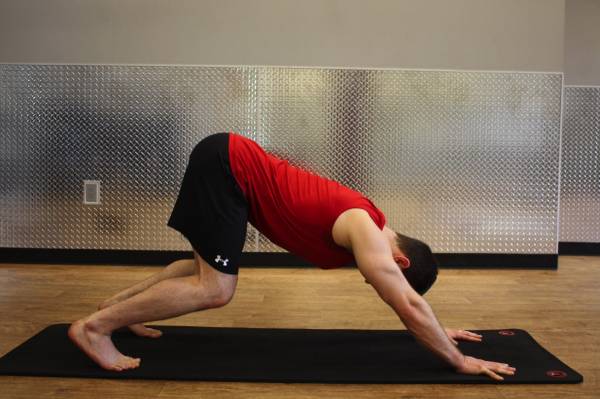
2. Use Props for Better Alignment
Before my teacher training, I hated using props. Part of that was out of laziness and lack of knowledge. But I will confess, I also thought I was just too good for them. How wrong I was.
Sometimes in yoga it’s easy to get caught up in the superficial details, like whether your heels reach the floor during downward dog or if you can touch your toes during a forward fold. For me in the case of triangle, it used to be putting my hand on the ground. But the space and opening you get when you use a block for extra support is well worth the trade-off.
Here’s what my triangle looks like without a block:
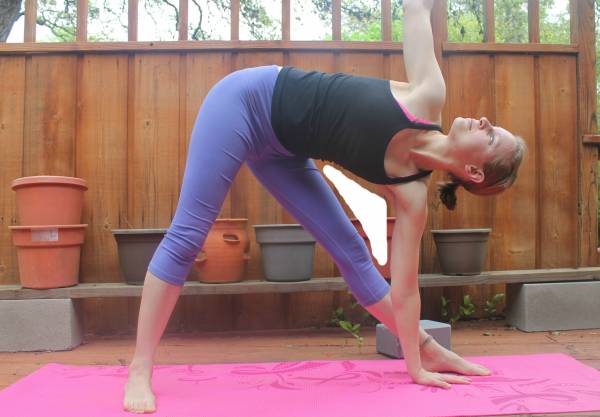
And here’s what it looks like when I let go of reaching the floor and use a prop. As you can see by comparing the two white triangles, the amount of space between my left side and front leg is much larger when I use the block. This extra space allows for optimal alignment of the spine and provides more space to breathe by creating length in the side body.
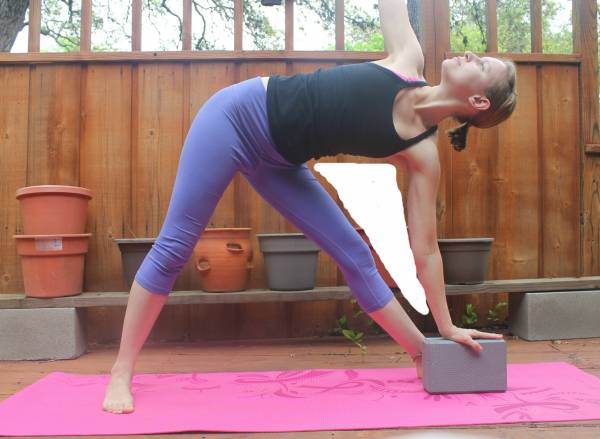
As noted in the book, A Chair for Yoga, using props in your yoga practice has the following benefits:
- Perform asanas which are difficult to perform independently
- Achieve and maintain correct alignment during the practice
- Stay longer and relax in challenging asanas, in order to attain their full benefit
- Study and investigate the asanas in greater depth
Props don’t necessarily make yoga easier. They just allow you to have a different – and often, better – experience of each pose.
3. Unlock Your Knees and Protect Your Joints
Unlocking my knees during yoga is probably the biggest change I’ve made since the training began. Locking your joints puts them under a large amount of stress, and some people may hyperextend their knees and overstretch. Since I’ve stopped locking my knees during yoga, I’ve had no knee pain, which was not the case before.
Here’s what my forward bend looks like with locked knees:
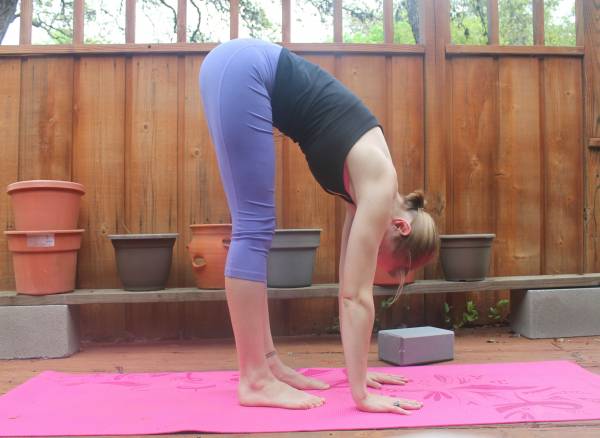
Instead of locking your knees, try putting a slight microbend to facilitate a safer stretch. You might notice it’s harder to remain in poses for a long time when you unlock your knees. That’s because your legs are more active when the knees are unlocked. When you lock your knees, you can keep your legs straight without working too hard. A microbend keeps the knees in a more dynamic and active state.
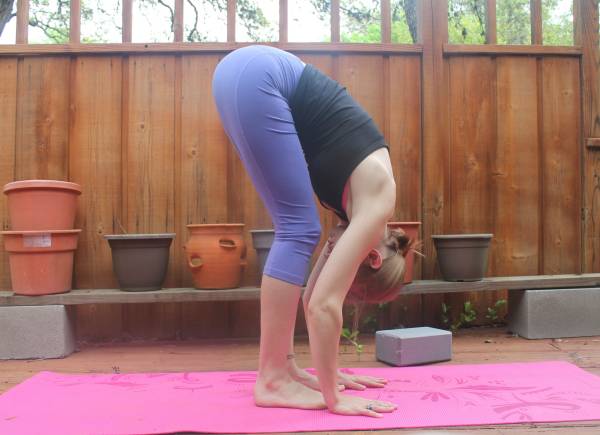
Experiment Is Key
There is much more room for play and spontaneity in yoga than I realized before. Changing things up can be more beneficial than doing the same movements over and over again, as renowned yoga teacher T.K.V. Desikachar explains in his book, The Heart of Yoga:
Varying the asanas renews attention and opens our senses to new experiences…If we do not work with variations and instead repeat the same postures over and over again, we lose this opportunity for new experiences.
As with any experiment, yoga gives us a chance to grow in knowledge. Have fun with your yoga practice and challenge yourself to try new things. I guarantee you will come away feeling like you got more benefit than you would doing the same thing over and over again.
What are some small adjustments that have made big differences in your yoga practice? Share in the comments below.
Further Reading:
- Balance: The Missing Link in Your Yoga Practice
- Reimagining a Pain-Free and Productive Chaturanga
- How to Maintain Yoga’s Lineage in Modern Times
- The Latest on Pulse Beat Fit Today
Nicole Crawford is currently completing her Yoga Alliance RYT 200 training. Read her journals to learn what yoga teacher training is like and to see what she is learning along the way.






